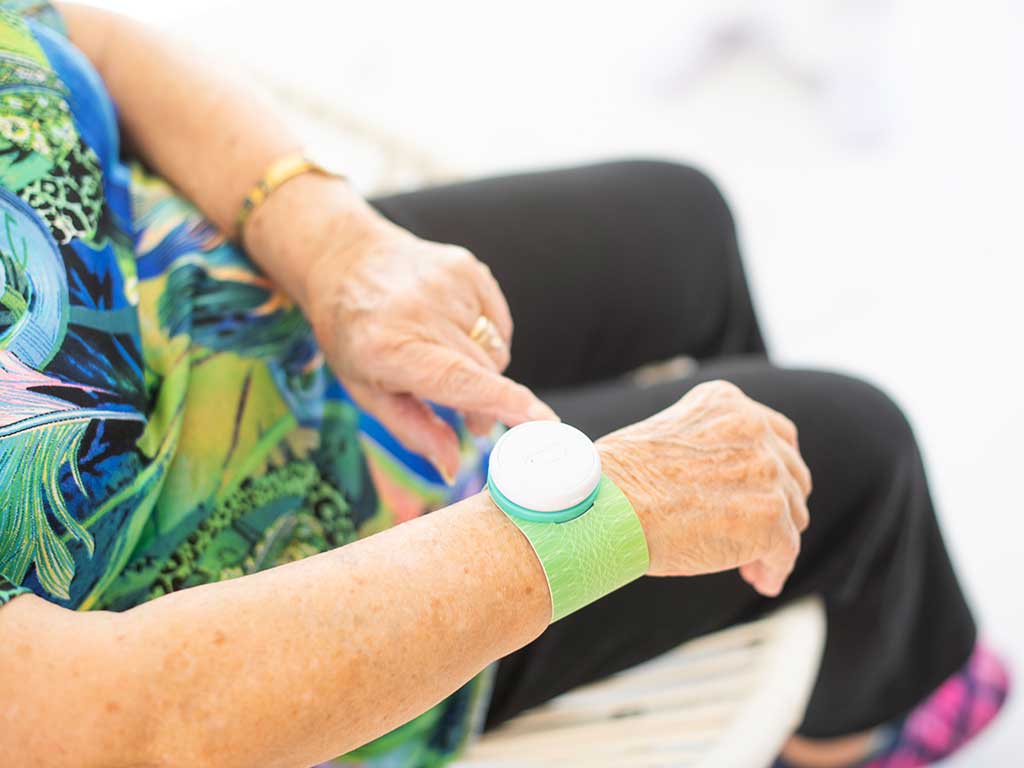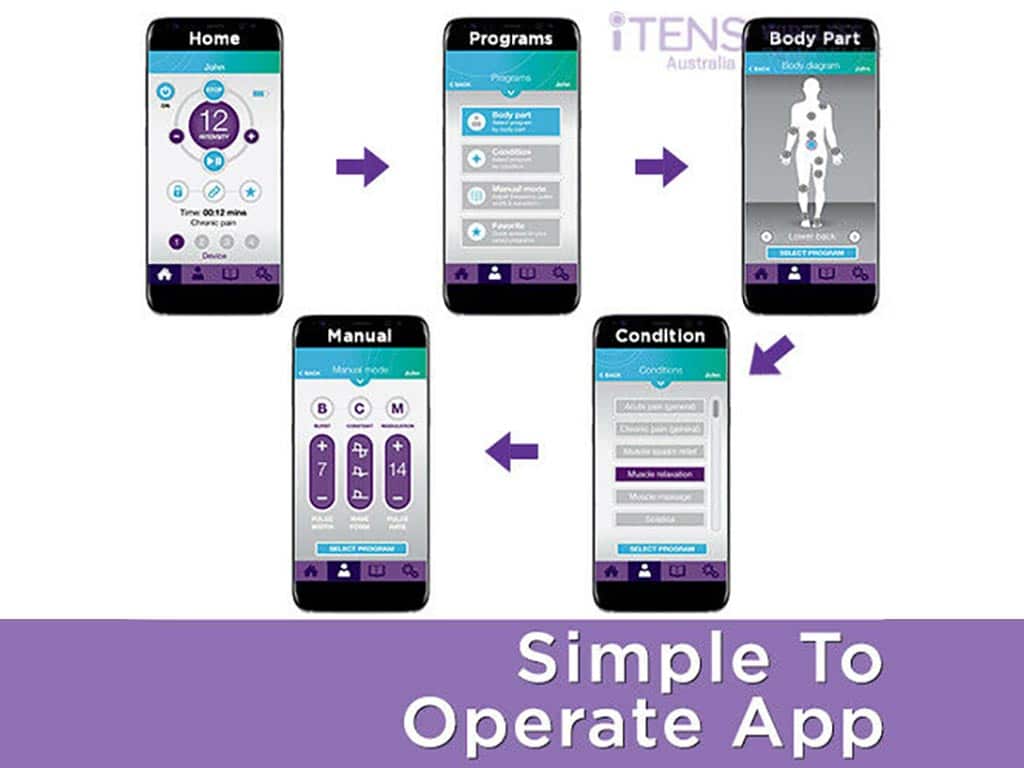
TENS, or Transcutaneous Electrical Nerve Stimulation, is a medical treatment that involves the use of low-voltage electrical currents through a portable device. This type of therapy offers a drug-free method of pain relief. The TENS medical device works by sending these currents through electrodes placed on the skin and then stimulating the nerves. This helps to block pain signals and release natural painkillers. People may use it to treat various conditions, such as musculoskeletal pain and neuropathic pain.
Chronic and acute pain conditions are a common experience of individuals of all ages and backgrounds. It can happen due to sudden injury, muscle overuse, or an underlying illness. In addition, it can range from mild to debilitating pain, needing immediate relief. Hence, TENS therapy is one of the options available for managing pain without the use of medications. This article will provide an overview of the TENS device, how it works, and the conditions it can treat.
What is TENS Medical?
TENS medical is a type of pain management that uses electrical stimulation to help reduce pain. The TENS device is a small, portable machine that delivers low-voltage electrical currents through electrodes placed on the skin. These currents are adjustable through the controls on the device, allowing the user to customise the intensity of the treatment.
TENS therapy is non-invasive and can be used safely at home or under the guidance of a healthcare provider. In clinical settings, a physical therapist or pain specialist may administer TENS to patients as part of their treatment plan for chronic pain conditions, postoperative pain, or injury rehabilitation.
Individuals may also use the TENS device at home or on the go to self-manage their pain. The device can be worn discreetly under clothing and used as needed throughout the day. It is important to follow the instructions provided by the manufacturer or healthcare provider on how to use the TENS device properly to ensure safety and effectiveness.
Advantages of TENS Over the Other Treatment Solutions
- Natural pain relief: TENS can provide pain alleviation without relying on medications. As a drug-free method, it does not have the risk of side effects from medicines.
- Non-invasive treatment: The device is applied transcutaneously, meaning it does not penetrate the skin. It does not require needles or injections, which can be uncomfortable.
- Targeted pain relief: It enables localised relief by targeting specific areas of pain through electrode placement. This minimises the risk of systemic side effects.
- Customisable: Individuals can control the delivery of electrical impulses based on their comfort level.
- Adjunctive treatment: A TENS machine can be used with other complementary therapies without conflict.

How Does TENS Medical Work?
A TENS medical device works using various modes of electric currents to stimulate the sensory nerves. When the currents reach them, they activate the natural pain-relieving mechanisms of the body. Furthermore, TENS stimulates two types of nerve fibres: A-delta fibre and C-delta fibre. A-delta fibre is responsible for transmitting sharp, immediate pain signals, while C-delta fibre is responsible for transmitting dull, chronic pain signals.
Individuals use various settings directed to target these nerves. One option is low-frequency stimulation. It uses a pulse rate of 2-10 Hz for lasting chronic pain relief. Another option is high-frequency stimulation, which uses a pulse rate of 50-100 Hz to provide immediate acute pain relief.
Moreover, a TENS machine may have pre-set modes that can provide different kinds of stimulation. The standard treatments are conventional, burst, and continuous modes. Each setting uses different patterns to deliver continuous or intermittent pulses. This can help target different types of pain, such as nerve pain, muscle spasms, muscle tension, and arthritis pain.
Mechanisms of Action
TENS therapy also works through various mechanisms of action to provide pain relief. The first is the pain gate mechanism. This is based on the Gate Control Theory, which suggests that electrical pulses can stimulate the dorsal horn neurons to “close the gate” in the spinal cord.
The second mechanism of action is the endogenous opioid release. The electrical pulses from TENS can trigger the production of endorphins. These hormones inhibit the nerve cells from sending pain messages to the brain, reducing the perception of pain. Another effect of TENS is to increase blood circulation, reducing inflammation and pain.

Treatable Conditions When Applying TENS Medical
TENS medical devices offer versatile and comprehensive pain relief by treating a wide range of conditions. One common condition is arthritis pain, which is a degenerative joint disease that causes pain and stiffness. Another type is neuropathic pain, which results from damage to the nerves, such as diabetic neuropathy or sciatica.
Muscle pain and tension, such as in fibromyalgia or muscle strains, are also treatable with TENS therapy. These conditions can be widespread or localised to a specific area. Additionally, individuals suffering from chronic low-back pain, neck pain, shoulder pain, and headaches may find relief through TENS devices. TENS can also be beneficial for postoperative pain management, spinal cord injury, and other sports injuries.
Furthermore, TENS therapy can provide relief during labour. Pregnant women may use the device at the early stages of labour to combat intense contractions throughout the delivery process. It is important to start at a low-intensity level and gradually increase to adequate intensities. Nevertheless, consulting a healthcare professional is advisable before starting TENS therapy to ensure its safe and appropriate use.
Are There Potential Adverse Effects?
TENS machines are generally safe and well-tolerated to use. However, there may be potential side effects for some individuals. Some people may experience skin irritation or redness at the electrode placement sites. This can usually be managed by cleaning the skin area or using hypoallergenic gel pads.
In some cases, individuals may experience nausea, dizziness, or other discomforts from the device. This may be due to strong stimulation or improper use. Decreasing the intensity level can help with this situation. It is always important to monitor the skin during and after TENS therapy to ensure there are no adverse reactions.
Conclusion
TENS medical is a non-invasive and drug-free form of pain relief that offers a wide range of benefits for individuals suffering from various types of pain. With different settings and modes available, TENS therapy can effectively target nerve pain, muscle tension, arthritis pain, and more. It works by sending electrical impulses to the body through the electrode pads. This can help stimulate the nerves to block pain signals and release endorphins.
Furthermore, TENS machines have several stimulation modes that users can choose from. Individuals may select from conventional, burst, or modulation modes to find the most effective pain relief for their specific condition. By understanding the mechanisms of action and treatable conditions, individuals can operate the device properly. Finally, it is important to consult a health professional before starting the therapy for guidance and advice. These combined aspects underscore TENS devices, like iTENS, as effective and safe for pain management.







